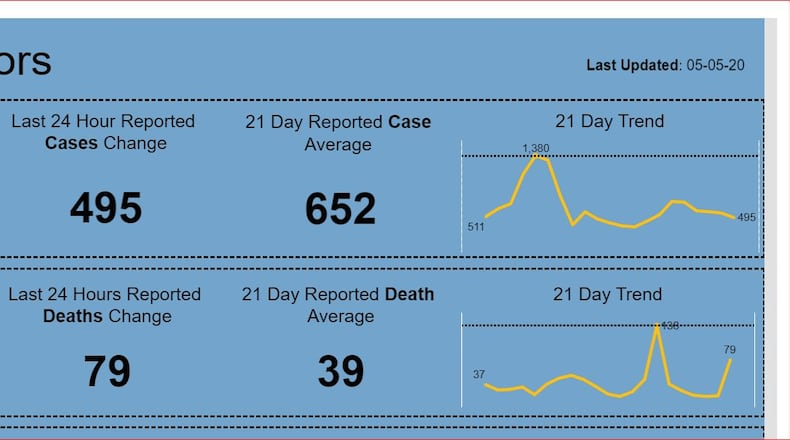Anderson Economic Group, based in East Lansing Mich., with data analytics firm Supported Intelligence, says it has gathered data from multiple countries and states to model the path of the COVID-19 pandemic since February.
“Overall, we are continuing to see a downward trend in the first wave of COVID-19 in the Midwest,” said Brian Peterson, Anderson Economic Group’s director of public policy and economic analysis. “Knowing where we are in terms of new cases and what could happen in the future is a critical first step toward easing stay at home restrictions and reopening portions of the economy.
RELATED: This Ohio county commission declared all of its businesses 'essential'
Added Peterson: “The pandemic is still a major concern, but our data and forecasts suggest that things are beginning to turn around.”
As of Tuesday, there were 20,969 cases reported Ohio, with 3,956 hospitalizations and 1,135 deaths. Of those hospitalized, 1,123 required intensive care.
"Signs point to a clear downward trend in cases in Ohio," Anderson said in its analysis this week. "The state experienced its peak new case count in mid-April, and it has since seen much lower numbers reported."
The company's graphical analyses can be found here.
That appears to dovetail generally with the state's recent numbers. Recently, the Ohio Department of Health's website has started to track COVID-19 trends over 21 days, including reported cases, deaths, hospitalizations and admissions to hospital ICUs.
Previously, the state was looking back at the previous five days of data trends.
About the Author


